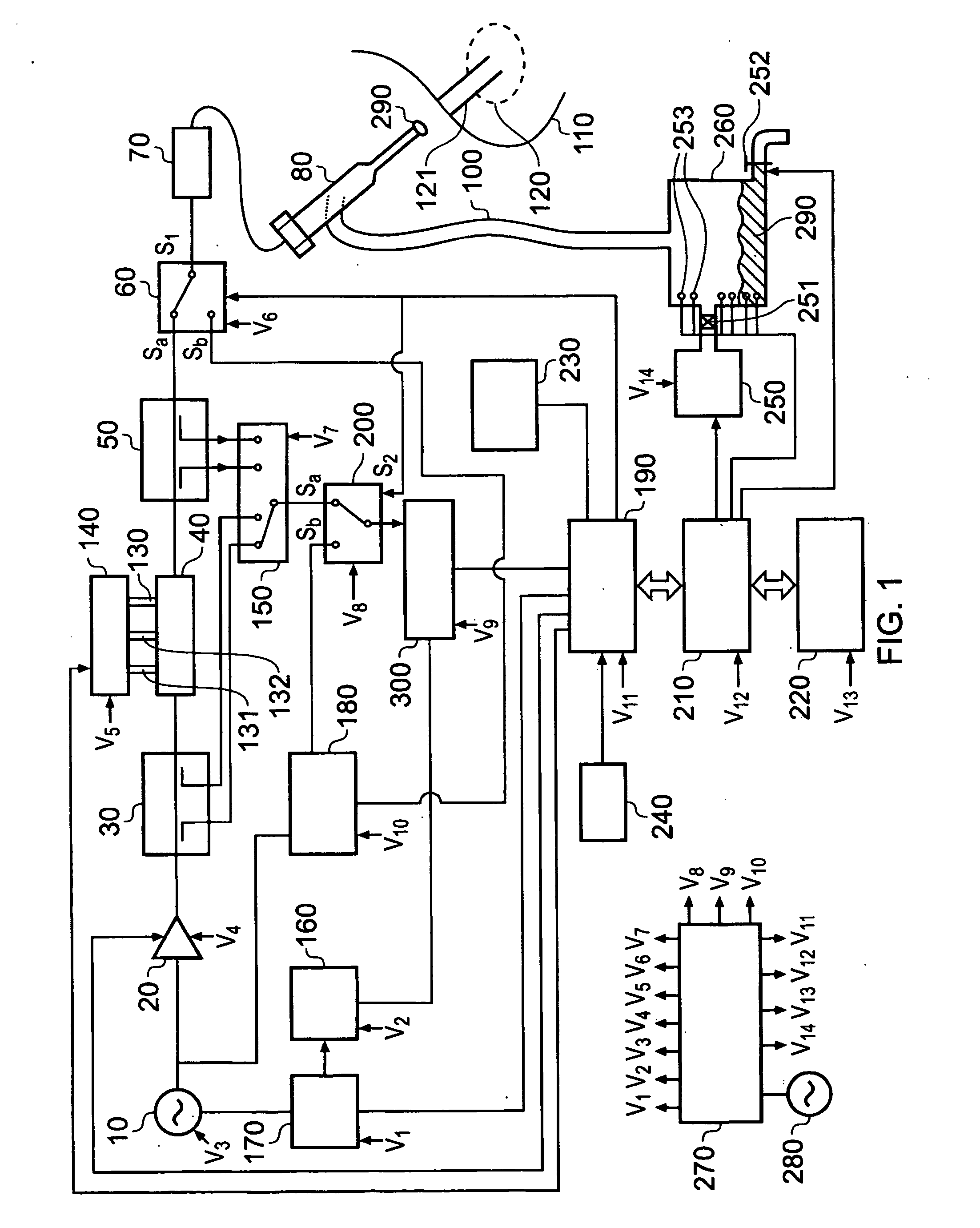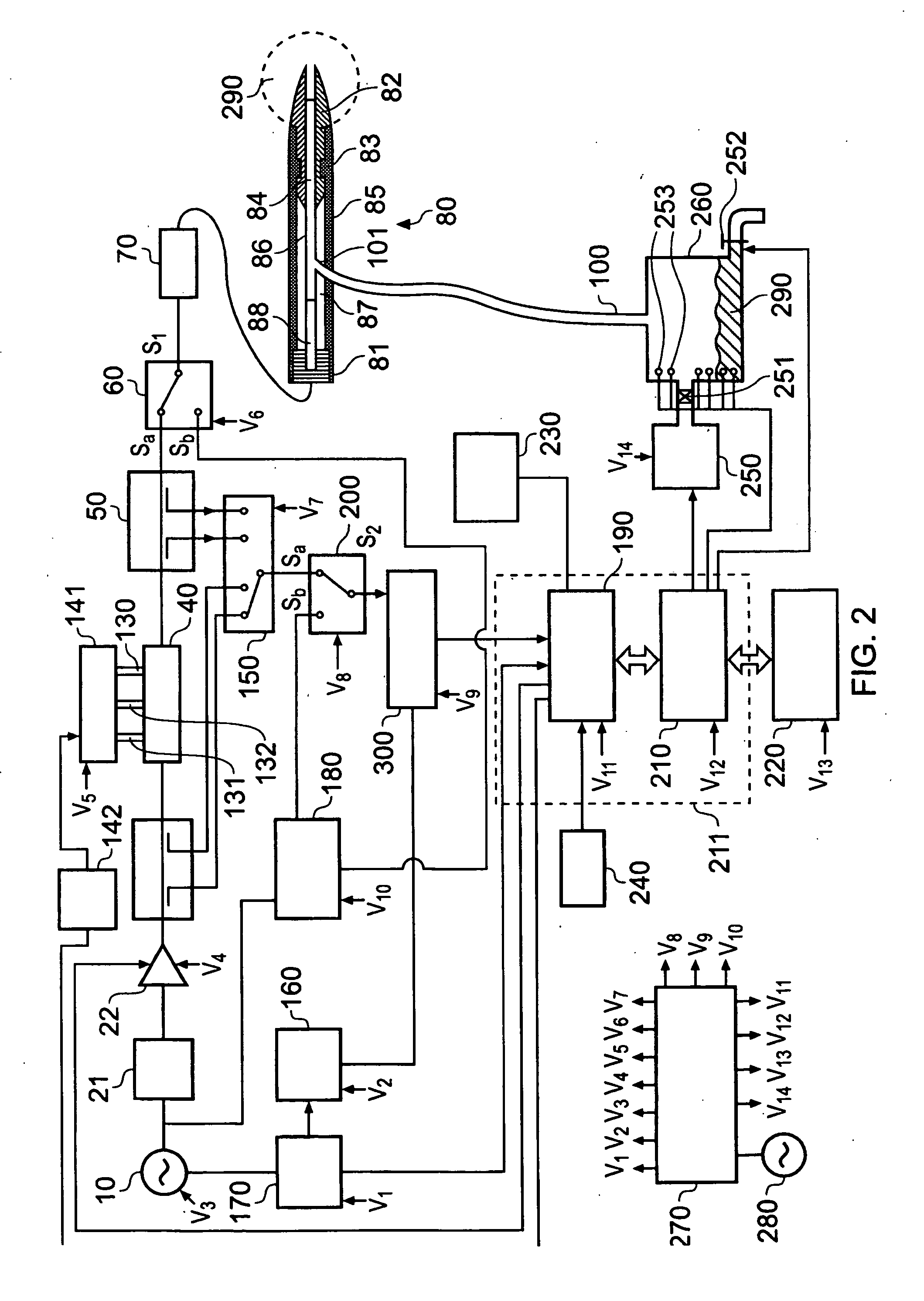Needle structure and method of performing needle biopsies
a biopsies and needle technology, applied in the field of biopsy needles, can solve the problems of high false negative risk, high cost of x-ray imaging procedures, and inability to accurately detect the presence of cancer cells, and achieve the effect of small radiation distance, high energy density, and effective local tissue measuremen
- Summary
- Abstract
- Description
- Claims
- Application Information
AI Technical Summary
Benefits of technology
Problems solved by technology
Method used
Image
Examples
Embodiment Construction
; FURTHER OPTIONS AND PREFERENCES
[0076]In this description the term ablation may refer to the ablation of a region of cancerous tissue, for example a tumour, or for sealing a track or channel made as the needle antenna passes through layers of healthy tissue. The latter will generally require lower levels of power and the track ablation may be performed with dynamic energy matching to the tissue impedance seen en route to ensure that controlled amounts of energy is launched into the various tissue types as the needle antenna traverses through the tissue to the outside world. However this invention need not be limited to performing controlled ablation with dynamic impedance matching being in place.
[0077]In general terms, one embodiment of the needle antenna structure comprises a rigid stainless steel structure with an outside diameter of around 2.2 mm and a sharp ceramic pointed cone at the distal tip to enable percutaneous insertion. However, the invention need not be limited to thi...
PUM
 Login to View More
Login to View More Abstract
Description
Claims
Application Information
 Login to View More
Login to View More - R&D
- Intellectual Property
- Life Sciences
- Materials
- Tech Scout
- Unparalleled Data Quality
- Higher Quality Content
- 60% Fewer Hallucinations
Browse by: Latest US Patents, China's latest patents, Technical Efficacy Thesaurus, Application Domain, Technology Topic, Popular Technical Reports.
© 2025 PatSnap. All rights reserved.Legal|Privacy policy|Modern Slavery Act Transparency Statement|Sitemap|About US| Contact US: help@patsnap.com



